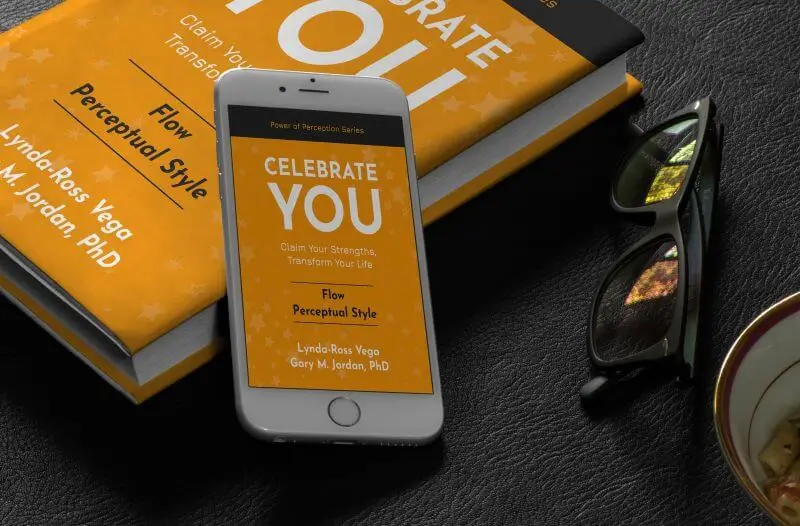
Flow Perceptual Style™ and Change
Restoring Stability and Harmony
Change is constant. Whether it’s a shift in relationships, a new process at work, or unexpected life events, it’s a part of daily life. For you, with the Flow Perceptual Style,change isn’t something to rush — it’s something to handle with care, patience, and purpose.

How Flow People Handle Change
You don’t distrust all change — just the arbitrary, hasty kind that disrupts harmony. You intuitively see how change ripples through people’s lives and environments.
You thrive when you can:
-
Evaluate the real impacts on people.
-
Introduce change gently and thoughtfully to minimize disruption.
-
Restore stability when change creates upheaval.
Your strength lies in understanding that change, when done right, must integrate the lessons of the past, the realities of the present, and the possibilities of the future.
What Makes Your Adaptability Unique?
If change feels disruptive to you, it’s because you see its full impact on the people involved. With your Flow Perceptual Styleyou:
-
Use lessons from past experience to anticipate consequences.
-
Plan carefully, striving to introduce change in a way that honors cooperation and stability.
-
Work tirelessly to minimize chaos, confusion, and unintended harm.
Others often seek you out during times of upheaval because your natural skills restore balance and coherence. You’re the calm in the storm — providing reassurance, perspective, and a thoughtful path forward.


Why Understanding Your Perceptual Style Matters
In a world that often rushes into change without looking back, your ability to create calm, restore balance, and preserve what matters is a vital gift. But without understanding how to channel your natural strengths, you might feel overwhelmed by changes that disrupt harmony, frustrated when people dismiss the ripple effects you see, or unappreciated for your efforts to maintain balance in chaotic situations.
When you embrace your Flow Perceptual Style,strengths, you can:
-
Reduce stress for yourself and others during times of change.
-
Facilitate transitions that are smooth, thoughtful, and lasting.
-
Create environments where people feel supported and valued.
Your ability to anticipate the ripple effects of change and plan accordingly makes you a stabilizing force in both personal and professional settings.
Take Action: Discover Your Perceptual Style
The Perceptual Style Assessment™doesn’t just describe your strengths — it helps you use them to navigate change with clarity and confidence.
When you complete the assessment, you’ll receive:
-
A 45-page action guide titled Celebrate You! specifically about the Flow Perceptual Style.
-
Deep insights into the unique ways you create connection, restore balance, and guide others through transition.
-
Practical tools help you bring calm, stability, and purpose to change — in your life and the lives of others.
Change doesn’t have to throw you off course — when you trust your strengths, you’ll navigate it with clarity, confidence, and calm.

Explore Other Perceptual Styles and Change
Want to see how others approach change? Explore the unique strengths and perspectives of each Perceptual Style:
Knowing how you handle change builds confidence. Knowing how others handle it builds connection and results.
Frequently Asked Questions about the Flow Perceptual Style and Change
What does it mean to have the Flow Perceptual Style™?
You experience life as interwoven and relational. You notice how the past gives shape to the present—and how honoring that lineage steadies what comes next. You translate inherited meaning and shared values into today’s choices to help yourself and those around you feel grounded, seen, and safe as things evolve.
What are some of the natural strengths of the Flow Perceptual style?
You create belonging and protect what holds people together. You listen with patience, sense the emotional weather, and uphold shared values when they’re tested. Your empathy is steady (not showy): you offer calm presence, careful timing, and gentle boundary-keeping that preserves dignity—for individuals and the whole community.
How does the Flow Perceptual style show up in Change?
You favor change that honors people and continuity. You help transitions land softly—preparing, steadying, and weaving new elements into what’s already working.
What are a few common blind spots — and how can I manage them?
You may sidestep needed tension to keep peace. Try naming the concern gently (“Here’s what I’m noticing…”) and propose a small, safe next step. You may over-give. Set soft boundaries (“I can do X this week; Y will need to wait”) to protect your energy and consistency.
How can understanding my Flow strengths help me thrive?
Awareness lets you lead with steadiness and heart. You can choose environments that value relationship and continuity, use your gift for cohesion to guide teams through change, and set humane boundaries that keep your support sustainable. Your quiet reliability is often the glue that makes bold outcomes possible.
Can my Perceptual Style change over time?
No - your Perceptual Style is innate. What evolves is how you apply it. With awareness and intention, your natural strengths become more flexible, confident, and influential.
 Lynda-Ross Vega has been fascinated by what makes people tick since she was a child. Her curiosity about human diversity and how to bring out the best in each person led her to a multifaceted career in the financial, technology, and behavioral consulting sectors. She has played roles that include top executive, entrepreneur, business owner, consultant, coach, daughter, sister, wife, stepmother, and grandmother.
Lynda-Ross Vega has been fascinated by what makes people tick since she was a child. Her curiosity about human diversity and how to bring out the best in each person led her to a multifaceted career in the financial, technology, and behavioral consulting sectors. She has played roles that include top executive, entrepreneur, business owner, consultant, coach, daughter, sister, wife, stepmother, and grandmother. Gary Jordan, Ph.D., has over 40 years of experience in clinical psychology, behavior assessment, individual development, and coaching. He earned his doctorate in clinical psychology from the California School of Professional Psychology—Berkeley in 1980.
Gary Jordan, Ph.D., has over 40 years of experience in clinical psychology, behavior assessment, individual development, and coaching. He earned his doctorate in clinical psychology from the California School of Professional Psychology—Berkeley in 1980.




